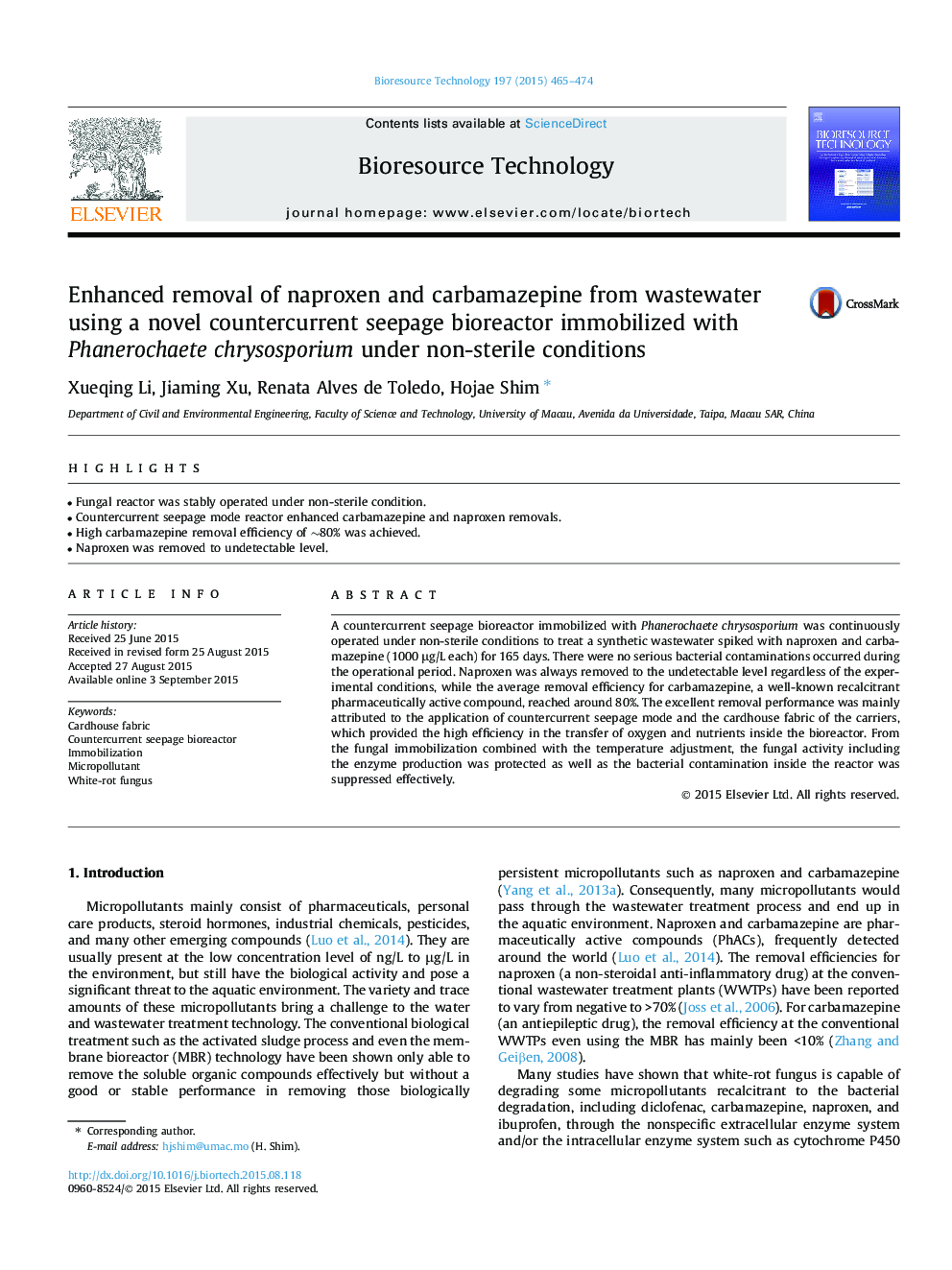| Article ID | Journal | Published Year | Pages | File Type |
|---|---|---|---|---|
| 7073326 | Bioresource Technology | 2015 | 10 Pages |
Abstract
A countercurrent seepage bioreactor immobilized with Phanerochaete chrysosporium was continuously operated under non-sterile conditions to treat a synthetic wastewater spiked with naproxen and carbamazepine (1000 μg/L each) for 165 days. There were no serious bacterial contaminations occurred during the operational period. Naproxen was always removed to the undetectable level regardless of the experimental conditions, while the average removal efficiency for carbamazepine, a well-known recalcitrant pharmaceutically active compound, reached around 80%. The excellent removal performance was mainly attributed to the application of countercurrent seepage mode and the cardhouse fabric of the carriers, which provided the high efficiency in the transfer of oxygen and nutrients inside the bioreactor. From the fungal immobilization combined with the temperature adjustment, the fungal activity including the enzyme production was protected as well as the bacterial contamination inside the reactor was suppressed effectively.
Related Topics
Physical Sciences and Engineering
Chemical Engineering
Process Chemistry and Technology
Authors
Xueqing Li, Jiaming Xu, Renata Alves de Toledo, Hojae Shim,
